Related Research Articles

Nanook of the North is a 1922 American silent film which combines elements of documentary and docudrama, at a time when the concept of separating films into documentary and drama did not yet exist. In the tradition of what would later be called salvage ethnography, the film follows the struggles of the Inuk man named Nanook and his family in the Canadian Arctic. It is written and directed by Robert J. Flaherty, who also served as cinematographer, editor, and producer.

Roald Engelbregt Gravning Amundsen was a Norwegian explorer of polar regions. He was a key figure of the period known as the Heroic Age of Antarctic Exploration.
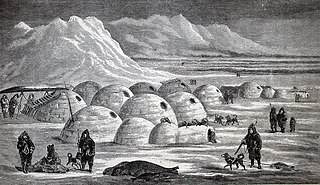
An igloo, also known as a snow house or snow hut, is a type of shelter built of suitable snow.
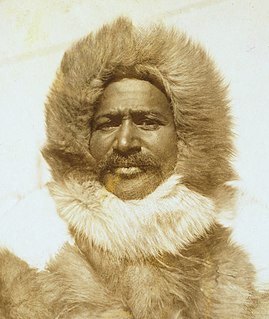
Matthew Alexander Henson was an African American explorer who accompanied Robert Peary on seven voyages to the Arctic over a period of nearly 23 years. They spent a total of 18 years on expeditions together. He is best known for his participation in the 1908–1909 expedition that claimed to have reached the geographic North Pole on April 6, 1909. Henson said he was the first of their party to reach the pole.

George Brent was an Irish-American stage, film, and television actor. He is best remembered for the eleven films he made with Bette Davis, which included Jezebel and Dark Victory.
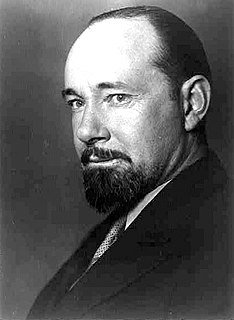
Sir George Hubert Wilkins MC & Bar, commonly referred to as Captain Wilkins, was an Australian polar explorer, ornithologist, pilot, soldier, geographer and photographer. He was awarded the Military Cross after he assumed command of a group of American soldiers who had lost their officers during the Battle of the Hindenburg Line, and became the only official Australian photographer from any war to receive a combat medal. He narrowly failed in an attempt to be the first to cross under the North Pole in a submarine, but was able to prove that submarines were capable of operating beneath the polar ice cap, thereby paving the way for future successful missions. The US Navy later took his ashes to the North Pole aboard the submarine USS Skate on 17 March 1959.
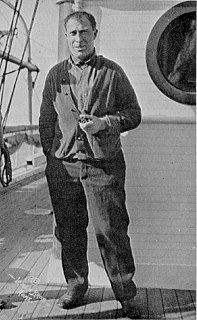
Robert "Bob" Abram Bartlett was a Newfoundland-born American Arctic explorer of the late 19th and early 20th centuries.

Uummannaq is a town in the Avannaata municipality, in central-western Greenland. With 1,407 inhabitants in 2020, it is the eighth-largest town in Greenland, and is home to the country's most northerly ferry terminal. Founded in 1763 as Omenak, the town is a hunting and fishing base, with a canning factory and a marble quarry. In 1932 the Universal Greenland-Filmexpedition with director Arnold Fanck released the film SOS Eisberg near Uummannaq.
Edward Small was a film producer from the late 1920s through 1970, who was enormously prolific over a 50-year career. He is best known for the movies The Count of Monte Cristo (1934), The Man in the Iron Mask (1939), The Corsican Brothers (1941), Brewster's Millions (1945), Raw Deal (1948), Black Magic (1949), Witness for the Prosecution (1957) and Solomon and Sheba (1959).

Uriel Sebree was a career officer in the United States Navy. He entered the Naval Academy during the Civil War and served until 1910, retiring as a rear admiral. He is best remembered for his two expeditions into the Arctic and for serving as acting governor of American Samoa. He was also commander-in-chief of the Pacific Fleet.

Eskimo is a 1933 American Pre-Code drama film directed by W. S. Van Dyke and released by Metro-Goldwyn-Mayer (MGM). It is based on the books Der Eskimo and Die Flucht ins weisse Land by Danish explorer and author Peter Freuchen. The film stars Ray Mala as Mala, Lulu Wong Wing as Mala's first wife Aba, Lotus Long as Mala's second wife Iva, Peter Freuchen as the Ship Captain, W. S. Van Dyke as Inspector White, and Joseph Sauers as Sergeant Hunt.

The Lady Franklin Bay Expedition of 1881–1884 to Lady Franklin Bay on Ellesmere Island in the Canadian Arctic was led by Lieutenant Adolphus Greely, and was promoted by the United States Army Signal Corps. Its purpose was to establish a meteorological-observation station as part of the First International Polar Year, and to collect astronomical and magnetic data. During the expedition, two members of the crew reached a new Farthest North record, but of the original twenty-five men, only seven survived to return.
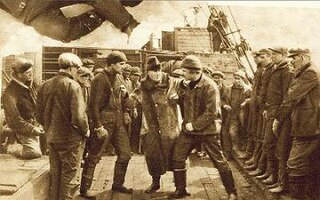
The Viking, also known as White Thunder and Vikings of the Ice Field, is a 1931 Newfoundland/American adventure film about sealing directed by George Melford. The Viking was the first film to record sound and dialogue on location with the use of magnetic wire recording. It is best known for the explosion aboard the ship SS Viking during filming, in which many members of the crew, including producer Varick Frissell, were killed. It remains the incident with the largest loss of life in film history.

Quest, a low-powered, schooner-rigged steamship that sailed from 1917 until sinking in 1962, is best known as the polar exploration vessel of the Shackleton–Rowett Expedition of 1921–1922. It was aboard this vessel that Sir Ernest Shackleton died on 5 January 1922 while the vessel was in harbour in South Georgia. Prior to and after the Shackleton-Rowett Expedition, Quest operated in commercial service as a seal-hunting vessel or sealer. Quest was also the primary expedition vessel of the British Arctic Air Route Expedition to the east coast of the island of Greenland in 1930–1931.
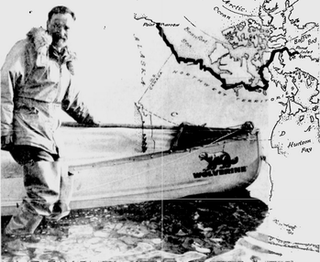
Anthony Dauksza was an American football player, film-maker, and outdoorsman. In 1971, he became the first person to traverse the Northwest Passage in anything other than a ship. Dauksza completed the 3,200-mile journey over the course of six summers on a solo canoe expedition.
Harpoon is a 1948 American adventure film directed and produced by Ewing Scott, and starring John Bromfield in his first film role. Although described by some sources as a "documentary," it is a fictional feature film shot on location in Alaska.
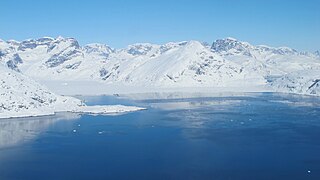
King Frederick VI Coast is a major geographic division of Greenland. It comprises the coastal area of Southeastern Greenland in Sermersooq and Kujalleq municipalities fronting the Irminger Sea of the North Atlantic Ocean. It is bordered by King Christian IX Land on the north and the Greenland Ice Sheet to the west.
Captain Percy M. Lemon was a signal officer and British polar explorer who was awarded the Polar Medal.
Ewing Scott (1897–1971) was an American writer, producer and director. He specialised in films that involved location filming.
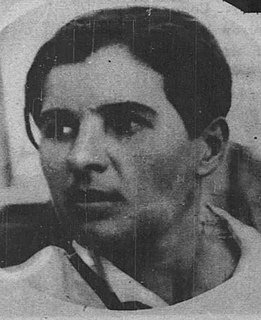
Nina Demme was a Soviet polar explorer, biologist, and ornithologist. She was one of the first women to explore the Arctic and have charge of a polar expedition. Raised in an polyamorous household in Kostroma, she attended the first women's gymnasium in Russia from 1907 to 1914 and then studied to become a teacher. After taking workers courses under Lenin's wife Nadezhda Krupskaya, she taught collectivism in the Ufa Governorate before settling in Leningrad in 1921 to study at the Geographical Institute. For eight years, she studied geography and biology, participating in numerous field trips on polar research.
References
- ↑ "A FEW OF THE NEW PICTURES AND AN IMPENDING FAREWELL: FAREWELL By NELSON B. BELL". The Washington Post. June 19, 1932. p. A1.
- ↑ "IGLOO". Gippsland Times . Vic. December 29, 1932. p. 3. Retrieved May 29, 2013– via National Library of Australia.
- ↑ "LOST FILM PARTY SAFE IN NORTH: Small Arctic Expedition Rescued After Trying Ordeal". Los Angeles Times. August 17, 1931. p. A2.
- ↑ Whitaker, Alma. (July 17, 1932). "Movies in the North: Ewing Scott, Home Town Camera Expert, Makes Good 500 Miles from North Pole". Los Angeles Times. p. I3.
- ↑ "BAD GIRL" CONTINUES RUN Los Angeles Times September 2, 1931: 11